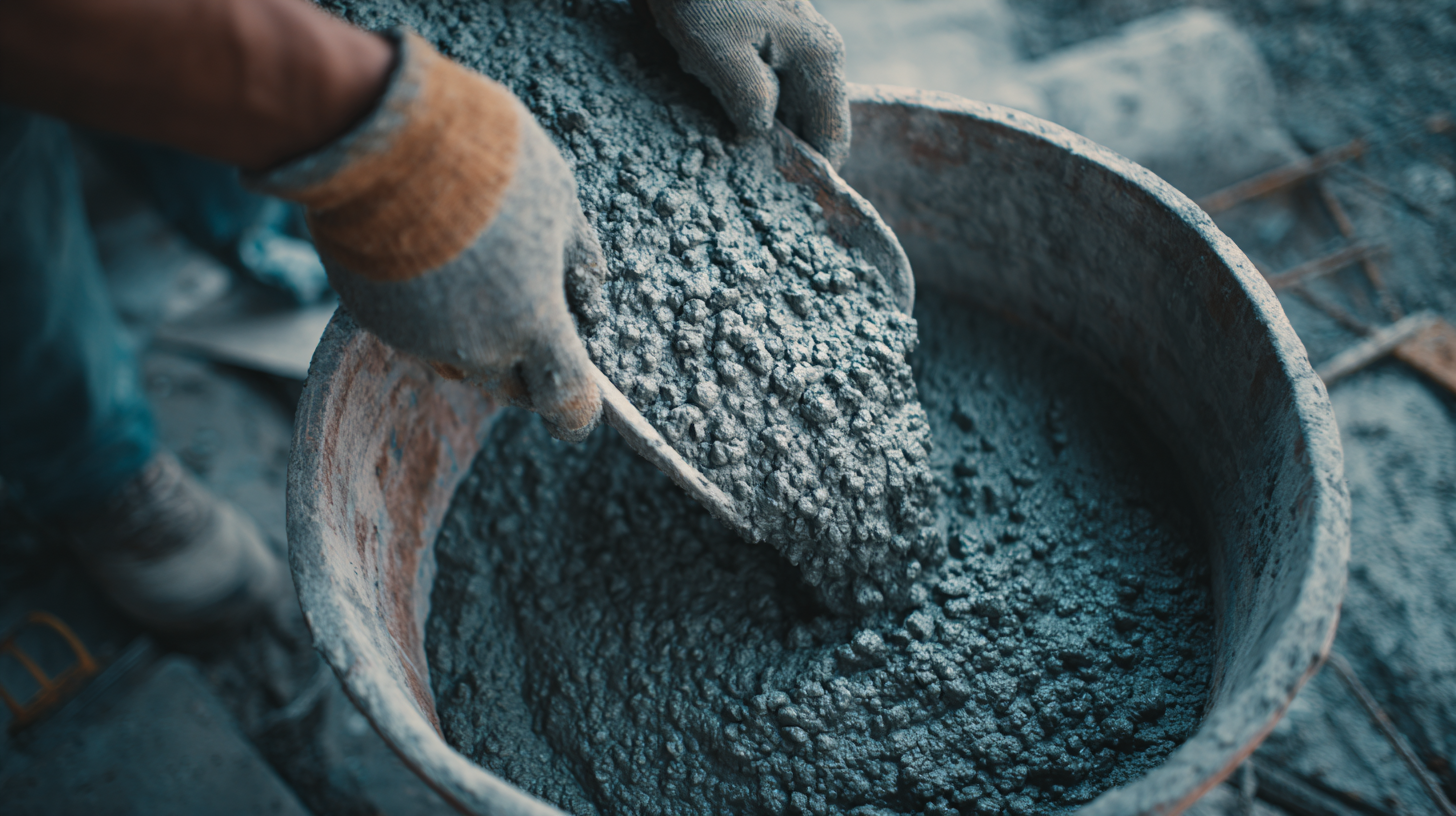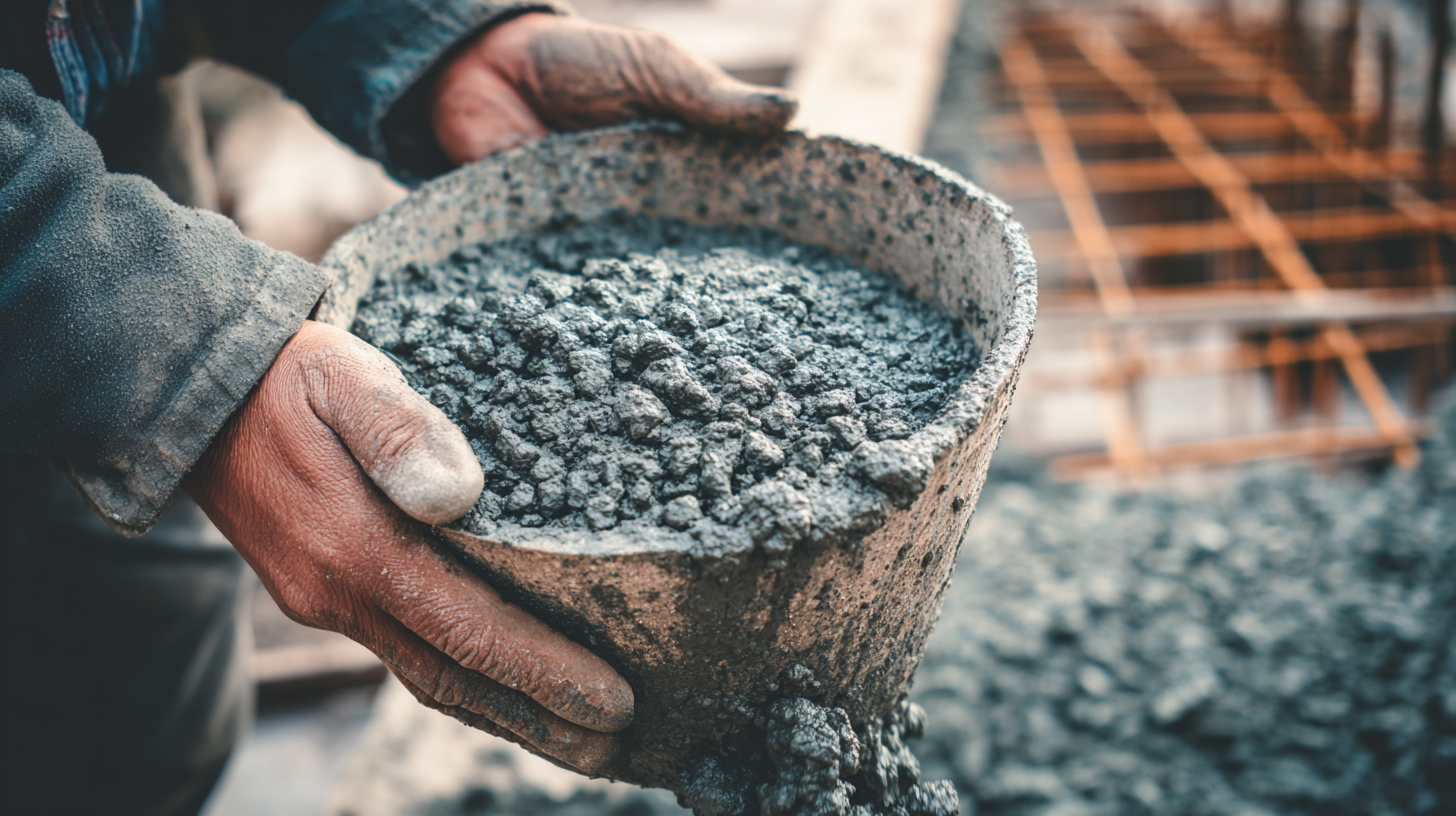Unlocking Perfect Mix: How a Concrete Needed Calculator Transforms Your DIY Projects
In the realm of DIY projects, the precision of material estimation fundamentally influences both the budget and the quality of the final result. A recent industry report from the National Ready Mixed Concrete Association highlights that nearly 80% of DIY enthusiasts encounter issues with material overestimation or underestimation, leading to wasted resources and increased costs. This is where a concrete needed calculator emerges as a game-changer, providing users with a reliable tool to accurately gauge the right amount of concrete required.

By inputting specific project dimensions and requirements, the calculator streamlines the planning process, ultimately enhancing efficiency and ensuring the optimal mix for any concrete application. Whether it’s a small garden walkway or a large-scale foundation, employing a concrete needed calculator not only saves time and money but also transforms potential headaches into seamless home improvement successes.
Understanding the Importance of Accurate Concrete Mixing for DIY Success
Accurate concrete mixing is essential for the success of any DIY project. When you are dealing with concrete, even small discrepancies in measurement can lead to significant structural weaknesses. This is especially crucial if your project involves weight-bearing components like driveways or patios. A poorly mixed batch can result in cracking, uneven surfaces, or worse, a complete failure of the structure. Therefore, achieving the perfect mix is not just about aesthetics; it's about ensuring durability and safety.
Tip: Always use a concrete calculator to determine the exact amount of materials you need. This minimizes waste and prevents the frustration of running out mid-project. Measure your space carefully and account for inconsistencies in your area for the best results.
Additionally, it's important to combine your materials in the correct ratios. Too much water can weaken the concrete, while too little can make it hard to work with. Invest in quality tools to ensure even mixing.
Tip: Consider practicing on a small, manageable project to get familiar with the mixing process. This can help you gain confidence and improve your technique before tackling larger endeavors. By focusing on accurate mixing, your DIY projects can achieve the professional quality you desire.

Key Features to Look for in a Reliable Concrete Needs Calculator
When embarking on a DIY project that requires concrete, having a reliable concrete needs calculator is crucial. A quality calculator should offer accuracy, ease of use, and versatile features. Look for a calculator that allows you to input various measurements, including length, width, and depth, to provide precise estimates for how much concrete you will need. Additionally, some calculators come equipped with unit conversion features, ensuring you can work in the measurement system most comfortable for you.

Tips for using a concrete needs calculator effectively include double-checking your measurements before inputting them. An error in dimensions can lead to significant waste or insufficient supplies. Furthermore, consider the type of concrete mix you’re using, as different mixes may have distinct volume requirements. A good calculator should guide you through this process, helping you understand how these factors affect your project's needs.
Lastly, consider calculators with user-friendly interfaces and clear instructions. This can save you time and reduce headaches while planning your DIY endeavors. The right tool will not only streamline your project but also enhance your confidence in handling materials effectively.
How to Use a Concrete Calculator: Step-by-Step Guide for Beginners
Using a concrete calculator is essential for ensuring your DIY projects yield the best results. The first step in this process is to determine the area you need to cover. Measure the length and width of the space accurately and multiply these dimensions to find the total square footage. This fundamental calculation sets the stage for determining how much concrete you'll need.
Next, identify the depth you plan to pour the concrete. This depth, combined with the area, will help you calculate the volume required. Most concrete calculators use cubic feet or cubic yards for measurement, so make sure to convert your calculations accordingly. Once you input this information into the calculator, it will provide the exact amount of concrete necessary, allowing you to purchase the right amount without excess or shortages. This streamlined approach not only saves money but also reduces waste, making your project more efficient and environmentally friendly.
Common Mistakes in DIY Concrete Projects and How to Avoid Them
When embarking on DIY concrete projects, avoiding common pitfalls can save time, money, and frustration. One prevalent mistake is miscalculating the amount of concrete needed, which often leads to insufficient supply or excess material. According to industry reports, improper measurements can result in an estimated 15% increase in project costs due to wasted materials and labor. Using a concrete calculator can help ensure the right proportions are achieved, significantly reducing this risk.
Another frequent error is neglecting the importance of proper mixing techniques, which can affect the strength and durability of the finished product. A study by the American Concrete Institute highlights that improper mixing can reduce concrete strength by up to 20%, leading to structural integrity issues. Furthermore, many DIYers overlook the necessity of properly preparing surfaces—failing to do so can result in poor adhesion and cracking. By understanding these common mistakes and employing tools like a concrete calculator, DIY enthusiasts can enhance their project's success and longevity.
Common Mistakes in DIY Concrete Projects
This chart illustrates the common mistakes in DIY concrete projects, highlighting the frequency of each mistake to help you avoid them and improve your project outcomes.
Transforming Your Outdoor Spaces: Creative DIY Projects with Perfectly Mixed Concrete
Transforming your outdoor spaces can elevate not only the aesthetics of your home but also its market value. Creative DIY projects that incorporate perfectly mixed concrete are an excellent way to achieve this transformation. According to a report by the American Society of Concrete Contractors, outdoor hardscaping projects have seen a significant surge in popularity, with a 20% increase in concrete patio installations noted over the past five years. This trend highlights the growing appreciation for durable, low-maintenance materials in landscaping.
Using a concrete needed calculator can help homeowners estimate the exact amount of concrete required for their projects, reducing waste and ensuring cost-effectiveness. For example, incorporating features such as concrete benches, fire pits, or decorative walkways allows for personalized outdoor experiences. Industry studies indicate that projects utilizing pre-mixed concrete not only result in better finishing but also enhance the overall durability of outdoor installations, with many lasting over 30 years with minimal upkeep. By strategically planning projects with the right mix, DIY enthusiasts can create outdoor spaces that are both functional and visually appealing, transforming their entire property.
Unlocking Perfect Mix: How a Concrete Needed Calculator Transforms Your DIY Projects
| Project Type | Area (sq ft) | Concrete Mix (cu yd) | Estimated Cost ($) | Completion Time (hrs) |
|---|---|---|---|---|
| Patio | 150 | 2.75 | 500 | 8 |
| Driveway | 500 | 9.25 | 1500 | 12 |
| Garden Walkway | 100 | 1.75 | 300 | 5 |
| Fire Pit | 30 | 0.5 | 80 | 3 |
| Planter Box | 20 | 0.35 | 60 | 2 |